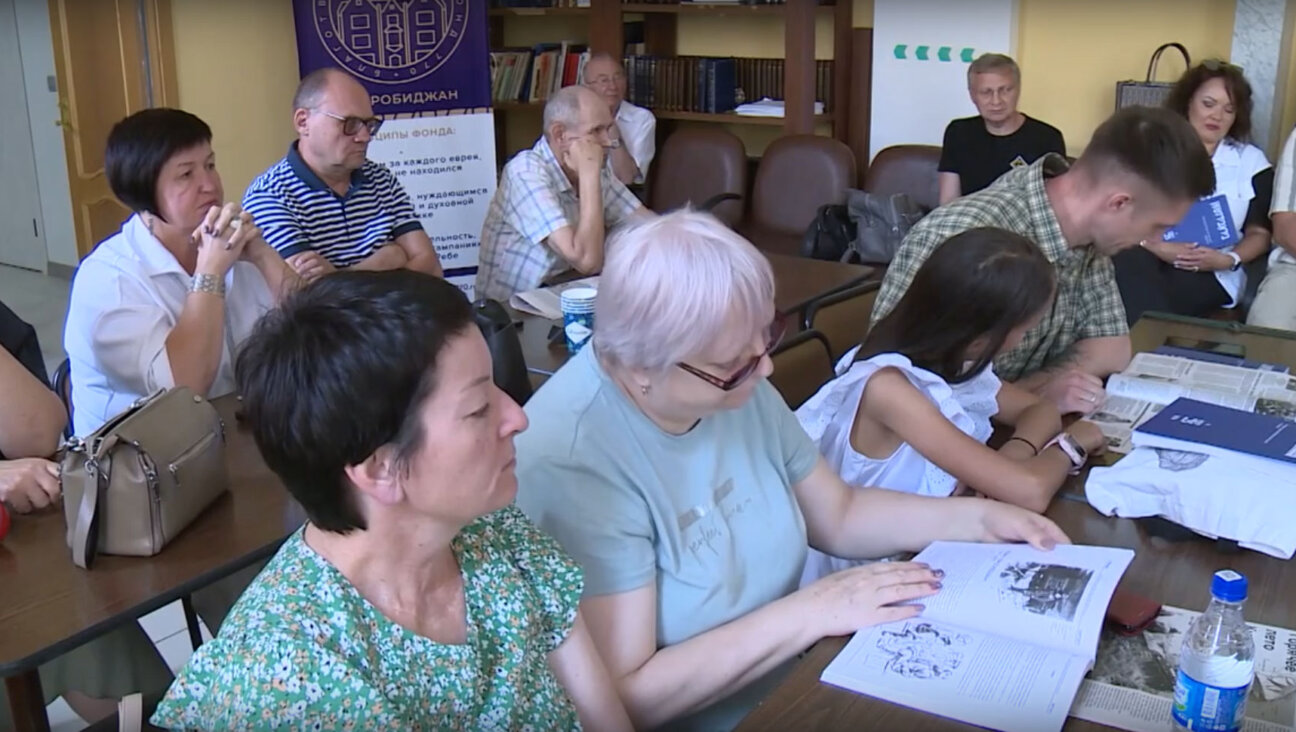Film: Rescued Art Of WWII
“THE RAPE OF EUROPA”: A MUST-SEE FILM
“The Rape of Europa” (based on the eponymous book by Lynn Nicholas) is a film that needs to be seen by every high school student, college student, history teacher, history buff, art teacher and museumgoer worldwide. It is not about the famous allegorical painting by Titian (1487-1576); it’s a riveting documentary about the theft, destruction and miraculous survival of many of Europe’s artistic and architectural treasures during World War II. “Europa,” by Richard Berge, Bonnie Cohen and Nicole Newham, elicits a visceral weeping for what could have become a total holocaust for Europe’s art and for its national treasures. The film details the race against the Nazi-programmed destruction and theft — mitigated by acts of heroism, sacrifice and determination — that underscores one of the film’s truisms: “Art is what makes us human.”
Hitler’s art hit list preceded his invasion of Europe’s countries inasmuch as he had already planned massive museums. Designed by Albert Speer, the museums were intended to house the paintings, furniture and household treasures of looted galleries and private homes in which the owners of the items had been sent to concentration camps When the film cites Hitler’s order — and its subsequent execution — to level every Polish library floor by floor and destroy the centuries-old Palace in Warsaw (which I had visited as a child), an anguish long-buried in me resurfaced. (The postwar reconstruction of Warsaw’s Old Town Square and the royal palace — down to its parquet floors, gilt and mirrored walls — is astonishing.) What residual anger must still exist when recalling the retreating German army blowing up Florence’s bridges, which had been designed by Michelangelo!
The evacuation of Paris’s Louvre 400,000 treasures in 137 convoys of trucks to the countryside— including the protection of the real Mona Lisa, which was driven around in a humidity-controlled ambulance—is among the documentary’s unforgettable highlights. (Though fictional, the thrilling 1964 Burt Lancaster film “The Train” about the French Resistance thwarting a convoy of art from reaching Germany, may have been inspired by the actual evacuation.) Add to that the heroic French mousy art curator, Rose Valante. While she never let on that she spoke German, she kept a secret log she memorized of a total of 2,700 stolen works that were later returned to their rightful owners. The film also highlights the superhuman saga of the evacuation of St. Petersburg’s treasures — four times the size of the Louvre — to Siberia with its 2,000 devoted curators living under the museum during Leningrad’s 900-day siege (many of them freezing to death). It is hauntingly unforgettable.
By the time America entered the war, the Roberts Commission had been set up to try to rescue and secure national treasures and monuments in the face of battle. Understaffed and often under fire, the group known as the Monument Men, under the leadership of Deane Keller, secured 100 towns against damage and looting. At the end of “The Rape of Europa,” the director of the Utah Museum of Fine Art returns a painting the museum had acquired to its rightful owner — the daughter of Arthur Seligman, an Austrian art dealer who his daughter said threw out the Germans when they first came to his gallery. And in another heartwarming ceremony, a young German who has dedicated himself to locating stolen Torah crowns to return to their rightful owners joins a New York congregation in a joyful dance. “Every time I hear rimonim (Torah crowns) jingle, it makes me shudder,” the young German said.
MICHAEL FEINSTEIN TOUTS INSTITUTE FOR MUSIC AND NEUROLOGIC FUNCTION
During my chat with pianist and American popular song interpreter Michael Feinstein at the Regency, where he was the host of the September 10 Music Has Power Awards for the Institute for Music and Neurologic Function, he expounded on the role of music as therapy. As Feinstein touted the institute — a member of Beth Abraham Family of Health Services and a pioneer in the use of music therapy for people with neurological and psychiatric disorders — he mused about the connection of music to memory and about music’s ability to create access to the impaired individual’s brain. Apropos, he cited Aleksandr Scriabin, who assigned a color to every note. “When [Nikolai] Rimsky-Korsakov told him, ‘You’re crazy,’ Scriabin asked in what key had he written ‘Ode to the Sun’ Rimsky-Korsakov replied, ‘The key of D.’ A vindicated Scriabin told him, ‘The key of D is yellow!’”
Dinner guests included past honorees and board members Concetta Tomaino, founder and executive director of the IMNF (now investigating how music therapy can help stroke victims and Parkinson’s patients to walk, even regain speech); neurologist Oliver Sacks (author of “Awakenings”), and Grammy-winning composer-conductor Joel Thome, formerly with the Israel Philharmonic Orchestra and distantly related to Alfred Dreyfus and also to Charley Dale of legendary vaudeville team Smith & Dale.
I had a remarkable post-awards dinner conversation with Thome (the family name was shortened from Thompovsky), who was born in Detroit and attended Temple Beth Jacob in Pontiac, Mich. A Jewish American genealogical gold mine, he told me: “My great-grandfather on my mother’s side, Lewis Cohen, came to the U.S. from Baden-Baden and fought in the Civil War. One of his seven children was Joel Brand, a co-founder of Columbia motion picture studio and a partner of the infamous Harry Cohn. My grandfather’s cousin, Charley Dale, was half of the legendary Smith & Dale vaudeville team, better known as ‘The Sunshine Boys.’ My mother’s family is from Alsace-Lorraine; her grandfather’s first cousin was Colonel Alfred Dreyfus. My sister and I grew up with the Dreyfus Affair very much a presence.” Thorne noted some of his own accomplishments: From 1961 to 1964, “I was a timpanist and percussionist with the Israel Philharmonic Orchestra. Then I left [the IPO] to compose and conduct.” The orchestras Thome has conducted include the National Symphony Orchestra of Mexico, the Israel Chamber Orchestra, the L.A. Philharmonic and the Seattle Symphony. Thome was particularly proud of a Sabbath service commemorative work he composed for the 1976 Bi-Centennial, which was commissioned by the National Endowment for the Arts. In 1994 he won a Grammy for best rock instrumental direction for Frank Zappa’s repertoire. He has collaborated with visual artist Alexander Calder and famed choreographer Anna Sokolow, and is currently the conductor of The Orchestra of Our Time. He is a professor of composition at SUNY Purchase.
The IMNF was founded in 1995 as a result of years of observation and clinical work at Beth Abraham. It boasts a fully equipped recording studio, the first of its kind in any nursing or rehabilitation facility. This year’s IMNF honorees were Thomas Roberts IV, managing director of The Bank of New York Mellon Wealth Management, and Thomas Nobile, CFA, vice president and senior portfolio manager of BNY Mellon Wealth Management. Past honorees include Mickey Hart, Grammy-winning percussionist with the Grateful Dead; Lorin Hollander, concert pianist-conductor; Henry Steinway, great-grandson of the founder of Steinway & Sons; Moby, multi-platinum recording artist, and Marvin Hamlisch.
A message from our CEO & publisher Rachel Fishman Feddersen

I hope you appreciated this article. Before you go, I’d like to ask you to please support the Forward’s award-winning, nonprofit journalism during this critical time.
We’ve set a goal to raise $260,000 by December 31. That’s an ambitious goal, but one that will give us the resources we need to invest in the high quality news, opinion, analysis and cultural coverage that isn’t available anywhere else.
If you feel inspired to make an impact, now is the time to give something back. Join us as a member at your most generous level.
— Rachel Fishman Feddersen, Publisher and CEO





















